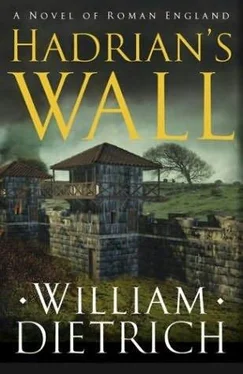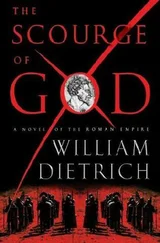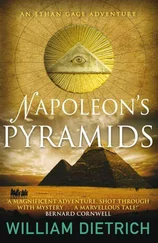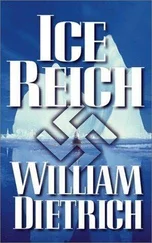William Dietrich - Hadrian's wall
Здесь есть возможность читать онлайн «William Dietrich - Hadrian's wall» весь текст электронной книги совершенно бесплатно (целиком полную версию без сокращений). В некоторых случаях можно слушать аудио, скачать через торрент в формате fb2 и присутствует краткое содержание. Жанр: Исторические приключения, на английском языке. Описание произведения, (предисловие) а так же отзывы посетителей доступны на портале библиотеки ЛибКат.
- Название:Hadrian's wall
- Автор:
- Жанр:
- Год:неизвестен
- ISBN:нет данных
- Рейтинг книги:4 / 5. Голосов: 1
-
Избранное:Добавить в избранное
- Отзывы:
-
Ваша оценка:
- 80
- 1
- 2
- 3
- 4
- 5
Hadrian's wall: краткое содержание, описание и аннотация
Предлагаем к чтению аннотацию, описание, краткое содержание или предисловие (зависит от того, что написал сам автор книги «Hadrian's wall»). Если вы не нашли необходимую информацию о книге — напишите в комментариях, мы постараемся отыскать её.
Hadrian's wall — читать онлайн бесплатно полную книгу (весь текст) целиком
Ниже представлен текст книги, разбитый по страницам. Система сохранения места последней прочитанной страницы, позволяет с удобством читать онлайн бесплатно книгу «Hadrian's wall», без необходимости каждый раз заново искать на чём Вы остановились. Поставьте закладку, и сможете в любой момент перейти на страницу, на которой закончили чтение.
Интервал:
Закладка:
Despite the fame of what is today a World Heritage Site, many of the most basic questions about Hadrian's Wall remain unanswered. Because it has been mined for building stone for more than a millennium, all that remains in most places are its foundations. While its thickness of six to ten feet can be deduced from the surviving stone stump, its height can only be estimated. Most authorities believe- based on the angle of fragmentary steps found at one spot, the wall's necessary height at another place to join a bridge top, and so on- that the Wall averaged about thirteen to fifteen feet high, its dimensions likely varying with location and terrain. This would not have included any protective crenellations that soldiers could have stood behind, which would have added several feet more to its imposing appearance from the Celtic side. This is only an estimate, however. While there are re-creations of the Wall's gates and towers in the English city of Newcastle, and numerous speculative drawings, they represent only educated guesses. They are based on Roman architecture elsewhere in the empire and a couple of crude depictions of the Wall found on a Roman bowl and cup uncovered by archaeologists. Simply put, we moderns don't know exactly what the Wall looked like or how it changed over its three centuries of use. The whitewashing of the structure described in this novel is based on the findings of a lime paint on some stones, but whether Hadrian's Wall was truly painted for its entire length-Roman construction was often colorfully painted-remains a matter of speculation for historians. We do know its western half began as a turf wall that was later mostly replaced with stone.
There is no written record of an actual assault on the Wall, though it certainly could have happened. As barrier and landmark, it undoubtedly figured in periodic conflicts such as the a.d. 367 uprising, since any invading army would have had to cross it. There is little evidence, however, of the kind of fire or destruction that might have accompanied an Alamo-like attack. Did the Wall deter all assault? Was it so easily pierced that invaders left no mark? Or has time erased all evidence of past battles?
Above all, experts are uncertain how the wall functioned. It seems impossible that the estimated five thousand Roman soldiers who permanently manned the Wall-stretched out for eighty Roman miles, or seventy-three modern miles-could have hoped to defeat a determined attack at any one point. They were simply spread too thin. What was the Wall's purpose, then? Simply to mark civilization's boundary in an emphatic way? To control trade and immigration, like the Iron Curtain of our recent times? To collect tariffs and taxes by funneling travelers through gates? Or was the Wall and its forts a mixture of all these things, a barrier that was both physical and psychological? The only thing we can surmise with confidence is that to a certain extent it worked at protecting Roman Britannia from raid and invasion and at sustaining different cultures south and north. The historic division between England and Scotland (Britannia and Caledonia in this book) was set by this Wall.
It is unlikely the Romans would have referred to the fortification as "Hadrian's" Wall. We don't know what name they gave it. Still, modern-day attribution to that energetic, gifted, eccentric, generous, ruthless, rugged, and sensual emperor is accurate. The Wall was started during Hadrian's reign, after he visited the province of Britannia, and a scene much like that of the prologue may indeed have occurred. Remains of a fifty-room wooden "palace" have been found at the Roman fort of Vindolanda that date from Hadrian's visit to Britain, and archaeologists think it may have been constructed for his entourage. We can only guess at what the emperor said or ordered, however: the only specific line in ancient literature that refers to the Wall's construction is a much later fourth century imperial history by Aelius Spartianus that states, "Having reformed the army (in Gaul) in the manner of a monarch, Hadrian set out for Britain. There he corrected many faults and was the first to build a wall, eighty miles long, to separate the Romans from the barbarians."
This is not the only ancient writing I relied on. Many of the Roman aphorisms in this novel are taken from history. The poem of Florus in the prologue is close to one that has actually come down to us from antiquity. So is Clodius's poem from the emperor Julian, about the dubious merits of British beer.
The Romans were aware of the great civilizations of India and China far to the east, trading with both: Valeria's silk gown would have originated in China and is based on the fact that Rome imported such luxuries. Historians thus believe it is possible that Hadrian would have heard of the Great Wall of China, which had taken continuous shape about three centuries before Hadrian's Wall was started. Did China's wall inspire his idea to protect the Roman Empire behind permanent fortifications? We don't know.
One of the challenges of this novel was to convey the prejudices Romans had toward the world outside their empire while suggesting that Celtic tribes were not quite the troglodytes that Roman commentators would have us believe. First of all, the word barbarian did not carry to the Romans the rather savage, uncouth, and filthy image that Hollywood movies give us today. It more accurately meant "outsider," and to apply it to the Celts or Germans creates an image in the modern mind that is not altogether fair. There is no question that the Mediterranean civilizations were for centuries militarily and culturally superior to the peoples of the north, but it was superiority of social organization more than advanced technology. The Romans were supremely disciplined and had centuries of experience in military strategy and governing conquered peoples. But the Celts were farmers of equal skill, superb artisans, ferocious fighters, and had an intricate religion and complex oral literature. The Romans borrowed from them some techniques of wagon-making, metalworking, and plowing. They incorporated many Celtic weapons. The outlying tribes did lag behind the Romans in writing, tactics, strategy, architecture, engineering, and ancient artillery, but appear to have been in no hurry to adopt such advances. The slow progress of ideas-including Christianity-in the ancient world is one of its most alien features, so accustomed are we to mass communication and quick change.
The Celts were a very old people, with a culture that stretched from the Black Sea to Ireland. They sacked Rome early in the city's history and at one time occupied northern Italy before being conquered there by the Romans shortly before the Punic Wars with Carthage. The fact that their remnants were ultimately pushed into Wales, Ireland, and Scotland should not negate the fact that they resisted the Romans for eight centuries. Portrayals we have of them come entirely from Latin sources, and some-such as Caesar's account of his conquest of Gaul-are part history and part deliberate political propaganda. Depictions of the "barbarism" of non-Roman outsiders should thus be taken with a grain of salt, given the incredible artistry of Celtic works that have been uncovered. Whether a Roman of Valeria's station would have reacted favorably to Celtic culture is debatable, of course, but intriguing to speculate about. In the American West, white captives of Indian tribes frequently preferred to stay with their captors when "rescued" by the cavalry. I have imagined a somewhat similar reaction in this novel. Nor should we forget that Rome, ultimately, was overcome in its western half by the very barbarians it disdained, for reasons still vigorously debated. While in many ways the fall of the empire was a catastrophe for civilization, it also cleared away the encrustation of a classical Mediterranean culture that had fossilized. The Dark Ages, however miserable they must have been to live in, were a necessary prelude to a new kind of light: an eventual marriage of northern energy and southern ideas.
Читать дальшеИнтервал:
Закладка:
Похожие книги на «Hadrian's wall»
Представляем Вашему вниманию похожие книги на «Hadrian's wall» списком для выбора. Мы отобрали схожую по названию и смыслу литературу в надежде предоставить читателям больше вариантов отыскать новые, интересные, ещё непрочитанные произведения.
Обсуждение, отзывы о книге «Hadrian's wall» и просто собственные мнения читателей. Оставьте ваши комментарии, напишите, что Вы думаете о произведении, его смысле или главных героях. Укажите что конкретно понравилось, а что нет, и почему Вы так считаете.












